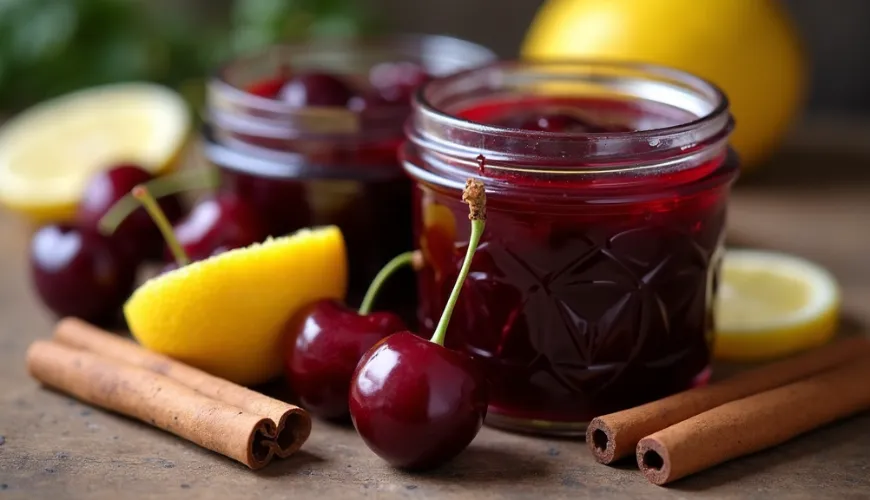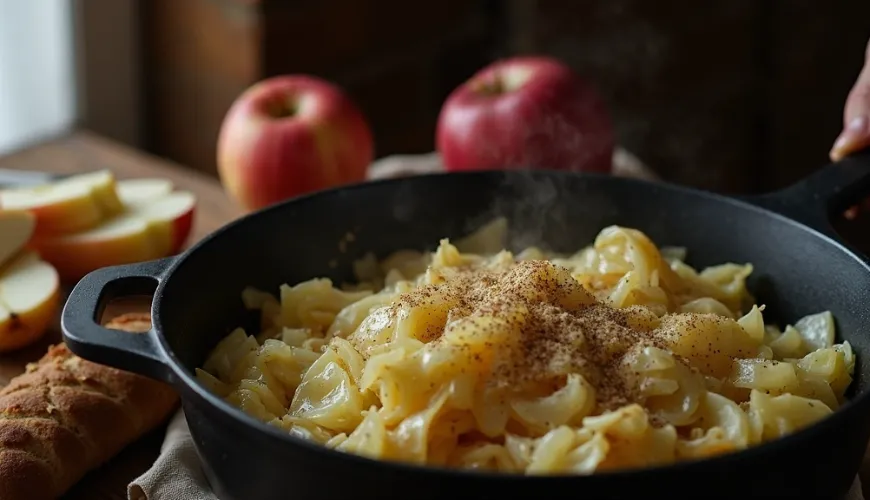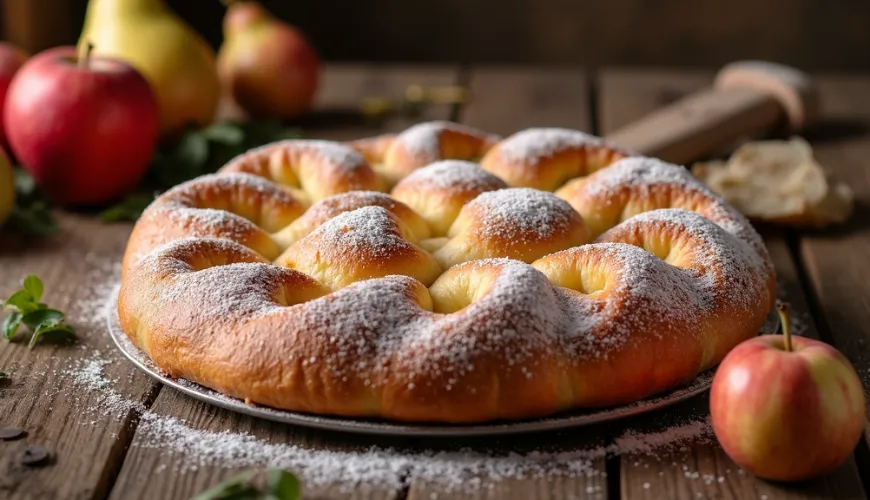
Discover a cherry jam recipe that you will love too

The Sweet Magic of Summer - How to Make Cherry Jam at Home Full of Flavor and Free of Chemicals
Summer and the scent of cherries – it’s a combination that immediately reminds most of us of holidays, childhood, and a jar of jam that grandma placed on the table next to fresh bread with butter. Cherry jam isn’t just an ordinary sweet spread – it’s a memory, a tradition, but also a way to use seasonal fruit for storage while avoiding unnecessary chemicals, dyes, or preservatives. Whether you crave the classic version, a spicy variant with spices, or a refreshing one with lemon, homemade cherry jam can be prepared to satisfy even the most discerning gourmets.
While store shelves are literally bending under the weight of various jams and preserves, more and more people prefer homemade delicacies. Why? Control over the ingredients, selection of quality produce, and absence of unnecessary chemicals. Moreover, homemade production offers the opportunity to customize the recipe exactly to your taste – less sugar, more lemon, a pinch of cinnamon, or a drop of rum? No problem.
Making jam may seem like alchemy, but with a few simple tips and a bit of patience, you can become a home preserving master. But first, the selection of ingredients – and that’s where it all begins.
Quality of Fruit Matters
The foundation of any jam is, of course, cherries. Choose ripe, sweet, and juicy fruits, ideally from a local source or your own garden. If possible, go for darker varieties of cherries – they tend to be sweeter, and the resulting jam color is more intense. Conversely, avoid overly soft or overripe cherries, as they can unnecessarily dilute the jam or affect its taste.
Interestingly, according to some studies (e.g., Food Chemistry, 2018), cherries contain not only a large amount of natural sugars but also antioxidants, such as anthocyanins, which contribute to anti-inflammatory effects and may help with muscle recovery after physical exertion. That’s why many athletes favor cherry juice – jam can then be a tasty alternative without industrial sweeteners.
After pitting – which can be the least fun but also the most meditative part of the whole process – it’s time for cooking. And this is where creativity opens up.
Three Flavors, Three Options - Classic, with Spices, or Lemon
Classic Cherry Jam Without Chemicals
The basic recipe is not too complicated: for one kilogram of pitted cherries, use approximately 500 g of brown sugar and the juice of half a bio lemon. If you aim for the purest composition, avoid gelling agents with preservatives – an alternative is pectin obtained from apples or citrus peels.
The process? Put the cherries in a pot, sprinkle with sugar, and let them release juice for several hours (ideally overnight). Then add lemon juice and possibly a bit of water. Bring the mixture to a boil and simmer on low heat for about 30–40 minutes until it starts to thicken. Try dropping a bit of jam on a plate – if it quickly solidifies, you can fill sterilized jars.
Cherry Jam with Spices: A Flavor Experience for the Brave
For those who like to experiment, there’s a version with spices. Cinnamon, star anise, vanilla, or even a drop of clove add depth and an unmistakable aroma to the jam. An ideal combination is cherry jam with cinnamon and a drop of rum – it’s suitable not only for bread but also with cheeses or in baked desserts.
When preparing, we recommend briefly boiling the spices in a small amount of water and then adding the entire decoction to the fruit. Or conversely – place the whole spices in a cloth, tie it, and let it boil directly in the jam, which you can easily remove before filling the jars.
Cherry Jam with Lemon: Refreshing Elegance
If you find sweet jams too heavy, try adding more lemon juice and possibly a bit of grated peel. Lemon not only balances the sweetness but also acts as a natural preservative. The result is a jam with a light citrus hint, ideal for yogurt or as a base for a cake.
An example is the Novák family from South Bohemia, who prepare cherry jam with lemon every summer and like it so much that they give it to neighbors as a small gift. "When you use bio lemons and cherries from the garden, it tastes completely different from the store. Plus, we know what we put in it," says Mrs. Nováková.
How to Tell When the Jam is Done?
This is a common question for anyone trying preserving for the first time. You can test the jam’s consistency with a simple trick: put a plate in the freezer for a few minutes, then drop a bit of jam on it. If it doesn’t run after a few seconds and has a gel-like consistency, it’s done. Be careful not to overcook it – the jam can lose color and flavor.
Proper filling is also important – pour the hot jam into clean, sterilized jars, close immediately, and turn upside down. If you want to ensure longer shelf life, you can further sterilize the jars in the oven or a water bath.
Tips for Perfect Cherry Jam Without Unnecessary Chemicals
- Use fresh and ripe fruit, ideally of organic quality
- Replace chemical gelling agents with natural citrus pectin
- Sterilize jars thoroughly – prevent spoilage risks
- Limit sugar amounts – less is often more
- Experiment with spices, herbs, or alcohol (e.g., rum, amaretto)
If you’re looking for inspiration for combinations, cherries also pair well with lavender, mint, or rosemary – even a few leaves can turn the jam into a gourmet delicacy. However, cherries on their own have such a pronounced flavor that they do well without additives. That’s when their natural sweetness and fruity character shine.
You might be surprised that in some countries, jams are prepared with a pinch of salt – it enhances the sweetness and adds depth to the flavor. Similarly, a drop of apple cider vinegar can provide a gentle contrast and accentuate cherry tones. It’s a bit like fine wine – you need balance and harmony.
Homemade cherry jam is proof that natural and healthy food preservation methods aren’t just a return to tradition but also a path to a sustainable and flavorful lifestyle. In a time when we read labels and avoid unnecessary “E-numbers,” jam made from just a few ingredients becomes a small victory over the food industry.
And what’s the best part? When you open a jar in a few months, you’ll smell the scent of summer. And that’s a value that no industrial production can replace.

